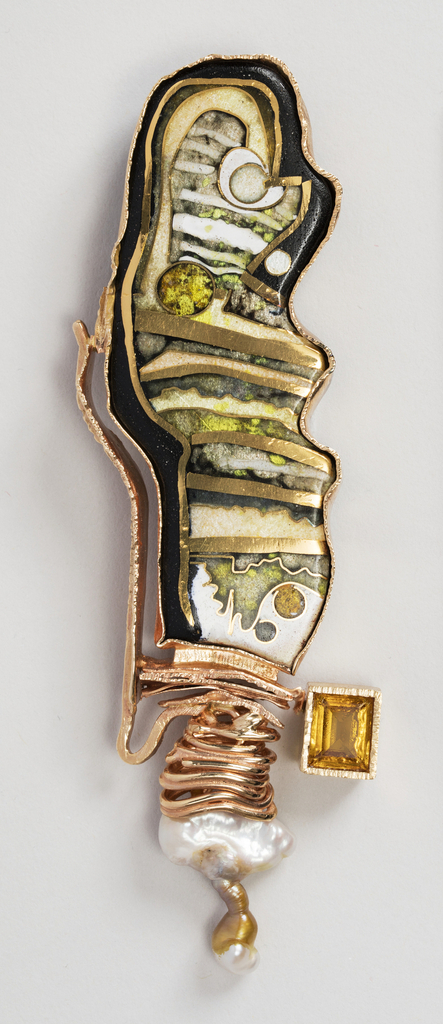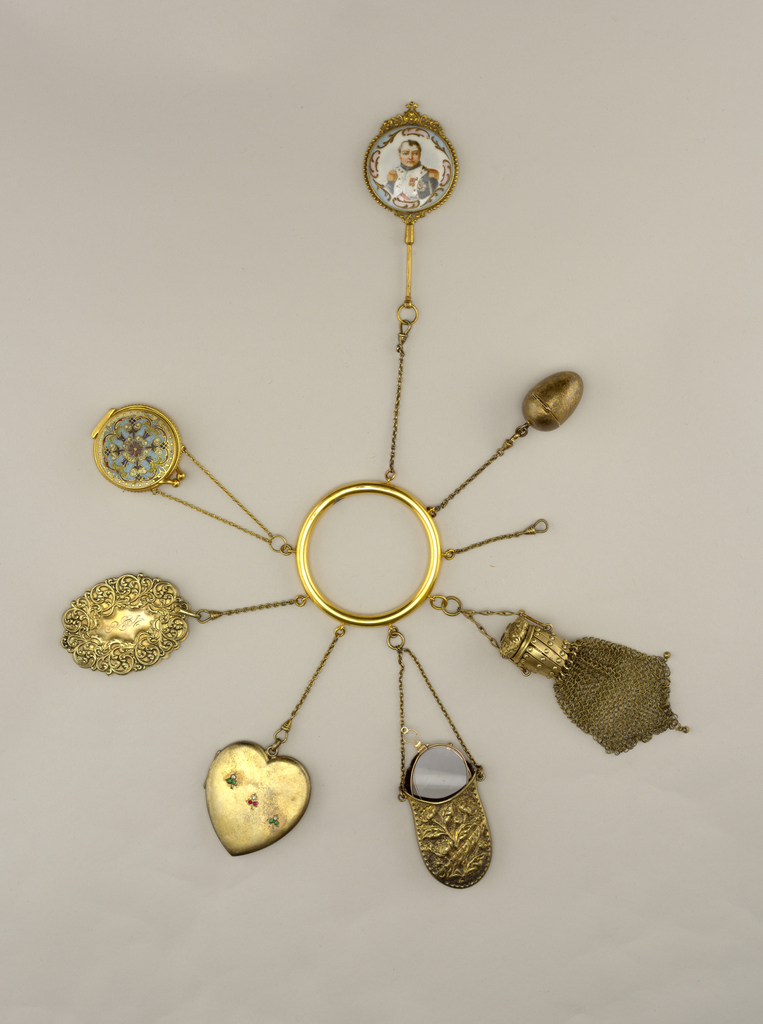Confrontational, playful, and even cartoonish are some of the adjectives that describe Manfred Bischoff’s style. Born in the Black Forest town of Schömberg, Bischoff began his training as a goldsmith’s apprentice and went on to study with Reinhold Reiling and Hermann Junger, both trailblazers in the modern art jewelry movement in Germany. Bischoff’s style was...
To celebrate the opening of Iridescence, on view through March 24, 2019, Object of the Day this week will feature iridescent objects in the collection. This stunningly crafted fruit knife combines exquisite artistry and strong Japanese influence to elevate the everyday dining experience into an art form. As part of a substantial dessert service of...
To celebrate the opening of Iridescence, on view through March 24, 2019, Object of the Day this week will feature iridescent objects in the collection. William Harper’s hand-crafted jewelry includes brooches, pendants, and necklaces, each telling a story of their own. Harper specializes in cloisonné enameling, an ancient decorative technique that has remained virtually unchanged...
Small enough to hold in one’s palm and ornate enough to catch the eye of a passerby, this snuffbox is a combination of exquisite craftsmanship and subtle status symbol, as such containers often were in 18th-century Europe. The box is attributed to Johann Martin Heinrici, a Swiss artisan who worked at the famed Meissen porcelain...
Author: Chris Martens September is New York Textile Month! In celebration, members of the Textile Society of America will author Object of the Day for the month. A non-profit professional organization of scholars, educators, and artists in the field of textiles, TSA provides an international forum for the exchange and dissemination of information about textiles...
Is it possible for a chair to be organic, imaginative, and even a little bit sexy? Perhaps, if it is one of the works by American designer Wendell Castle. Castle’s Triad chair is a piece composed of curvilinear sweeps of gilt fiberglass that make a strangely inviting seat. At the risk of pushing the pun...
Capitalizing on growing nationalism after Italy’s unification in 1870, the Castellani jewelry company coined the term “Italian archeological jewelry.” Their copies of ancient Etruscan, Greek, and Roman works appealed to erudite consumers in Europe and America, accommodating nineteenth-century tastes for revival styles. Although based in Rome, the company promoted their designs abroad and won acclaim at...
The Cooper Hewitt’s American Chatelaine (ca. 1860) may seem like a completely foreign object at first glance but upon further study, it is more familiar than it might seem. If we look at the history of chatelaines we see that they are part of an archetype of tools to carry on one’s person that is...
Designated as the “Royal Porcelain Manufactory” during the mid-eighteenth century under the reign of Louis XV, the Sèvres Porcelain Manufactory needs little introduction as one of Europe’s most innovative and influential porcelain manufacturers during the eighteenth century. Eight years before Sèvres manufactured this cup and saucer in 1780, Louis XVI had become king, and the...








